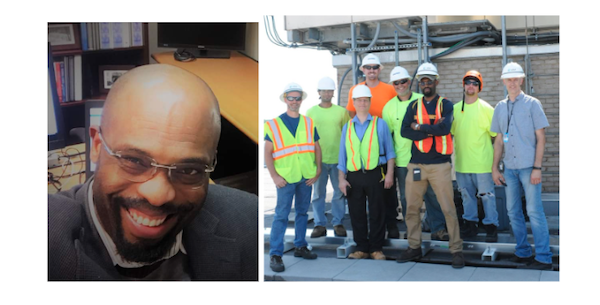George Okorie’s love for the telecommunication industry started in his native country, Nigeria, where the only means of communication were via Motorola hand-held portable radios (i.e.,“walkie-talkies”), pagers and microwave repeater base stations. As an intern, Okorie said he was fortunate to have worked in the oil and gas industry that heavily relied on a strong communication backbone. Such exposure, as a 20-year-old undergraduate student, provided him the basics of tower maintenance, surveys and equipment that were later to be his guiding star.
Fast forward 20 years and Okorie’s latest roles as a construction and implementation manager had him overseeing the completion of over 300 tower projects. As project manager, Okorie led teams working with turf vendors like Jacobs, ETAKS, Bechtel, and MasTec.
“It has been such a remarkable personal journey to see where the telecommunication industry has reached from over two decades ago when I first started,” Okorie told Inside Towers. “My start was only the beginning of something great.”
His saga began in 2001, as an RF Engineer after obtaining a Masters of Science in Electrical Engineering with a focus in telecommunication engineering. He was first assigned the task of evaluating potential co-location structures for the forthcoming GSM overlay network his company had embarked upon. With that first taste of the tower industry, Okorie said his desire to stay and grow a career there became “concrete.”
One of his favorite parts of the job, now as a manager, is getting outside and making site visits with the construction team. “It affords me the close opportunity to see the tower crew assigned to my construction projects at work close hand,” he said. “This synergy of my background in construction and engineering, RF design and site acquisition all culminate in the implementation of a very robust network in the Washington-Baltimore market.”
Okorie said he found it very rewarding to provide troubleshooting expertise for defective tower top components and antennas. One incident happened to be a site overlooking the Capitol in Washington, D.C.
“My tower crew had just upgraded the antenna systems; however the site, upon rebooting, was plagued with high drop call rates…probably in the top ten in the nation. The base station showed no alarms besides the high drop call rates which led to my team and I troubleshooting the entire RF path. It only dawned on me the following day that the problem was the clock timing unit internal to the BTS that was the issue. This was the first occurrence of such in the market,” he said.
Okorie said he feels the tower industry still has opportunities for growth. Most of his suggestions encompass safety, efficiency and better tower management for both the tower companies and carriers. With the advent of IoTs and AI technology, he sees the towers of the future retrofitted with sensors and monitors that can assist with the real time monitoring of physical properties such as wind speed, tower stress, weather conditions, renewable energy generation.
“Other opportunities may be considered as we move beyond the pandemic,” Okorie said. “Innovation and profit will depend on companies’ ability to effectively match talent to current needs such as providing access control, security monitoring of the site location and consolidated power provision for carriers leasing such infrastructures.”





Reader Interactions